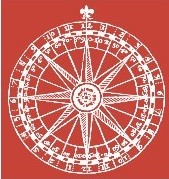Sorciers et philosophes : la duplicité des Gitans dans le théâtre italien de la Renaissance
This article examines the depiction of Gypsies in sixteenth-century Italian theatre. By staging Gypsies, dramatists consciously and unconsciously reflected contemporary attitudes and biases towards this itinerant foreign population. They also…
তালিকাভুক্ত Article | গোষ্ঠী দ্বারা প্রকাশনা Iter Community
সংস্করণ 1.0 - প্রকাশিত উপরে 12 Oct 2025
লাইসেন্সকৃত Creative Commons BY-NC 4.0
বর্ণনা
This article examines the depiction of Gypsies in sixteenth-century Italian theatre. By staging Gypsies, dramatists consciously and unconsciously reflected contemporary attitudes and biases towards this itinerant foreign population. They also exposed their own insecurities : while portraying Gypsies as incapable of honest interaction with the native Italian population, they also revealed that Italians, for their part, were unable to assimilate the Gypsies’ diversity. Italians, it seems, could not accept any perceived violation of anthropological constructs that valued permanent work, geographical stability, and ethnic homogeneity. As a result, the Gypsy became the symbol of all vagrants and vagabonds who, because of their itinerant nature, were seen as dangerous external elements that threatened the social, political, and religious stability of the local population.
এই কাজটি উদ্ধৃত করুন
গবেষকদের এই কাজটি উদ্ধৃত করতে নিম্নলিখিতভাবে উল্লেখ করতে হবে:
ট্যাগ
নোটস
Original publication: Leta, Matteo. "Sorciers et philosophes : la duplicité des Gitans dans le théâtre italien de la Renaissance." Quaderni d'italianistica 40 (2): 2020. 25-48. DOI: 10.33137/q.i..v40i2.34877. This material has been re-published in an unmodified form on the Canadian HSS Commons with the permission of Iter Canada / Quaderni d'italianistica. Copyright © the author(s). Their work is distributed by Quaderni d'italianistica under a Creative Commons Attribution-NonCommercial 4.0 International License. For details, see https://creativecommons.org/licenses/.
প্রকাশনা প্রাকদর্শন
Iter Community
This publication belongs to the Iter Community group.
When watching a publication, you will be notified when a new version is released.
